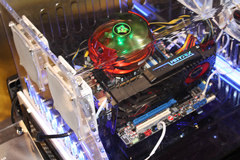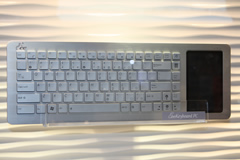Nvidia and Asus
As we all know by now, Nvidia was not ready to announce Fermi-based products just yet, but it was showing a prototype card running a multitude of demos, including some showcasing the card's DirectX 11 capabilities and others doing multi-monitor support.
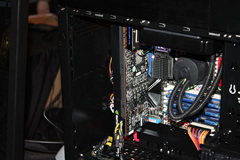
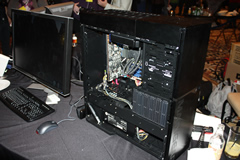
When we talked to the Nvidia guys they said the card we were seeing in action (GF100) was final hardware and the work remaining laid in driver optimization, BIOS and clock tweaking, so the GPU speed and thermals for the first production Fermi card have not yet been finalized. Nvidia hopes to have its first GeForce card based on this architecture out by the first quarter. It will be a single card launch targeting the high-end sector, with several other releases in the pipeline throughout the rest of the year. Performance-wise, this first card should be "faster than the competition's fastest single-GPU offering", they claimed.
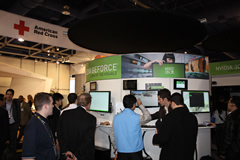
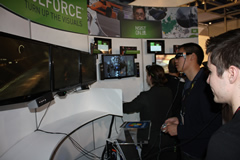
We were not allowed to see hard performance numbers, but the card was big and was running hot and loud. Nvidia was happy to reiterate however this reference board lacked the necessary optimizations in those regards. Their marketing team also added that in good part the delay was due to the behind the scenes engineering that makes Fermi a formidable candidate for GPU computing.
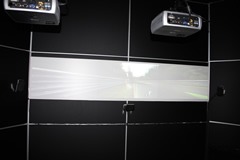
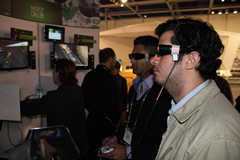
At Nvidia's public booth they had a Maingear PC running two GF100 cards in SLI. This setup powered the three projectors showing Need for Speed Shift running in 3D (Nvidia 3D Vision Surround) - forgive the terrible pictures but we forgot to turn off the flash. Other gaming showcases consisted of more multi-monitor and 3D Vision combinations, it has been a long time since we saw Nvidia playing catch up this badly.
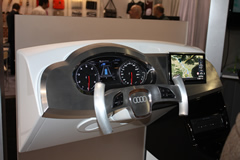

There was also Ion running on recently announced products, from netbooks to all-in-one PCs. We chatted with Nvidia about their chipset business future. After all, the current iteration of Ion is still way more powerful than Intel's most recent Pine Trail platform, but Nvidia doesn't get access to the latest FSB-less Atoms, which will pose a problem in the future. In the meantime, their game will be to offer discrete low-powered graphics for new processors.
More often than not we enjoy Asus' work in the motherboard department. That used to be their bread and butter, but most recently they have thrown themselves after the consumer and this couldn't have been more obvious while we checked the myriad of notebook offerings they had on display along with netbooks, all-in-ones, desktops, and other neat concept PCs like the 'Dual Panel Concept' tablet or the Eee keyboard (this last one is expected to go for sale later this year, after numerous delays).
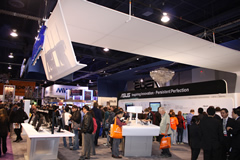

A very handsome Asus desktop was at display with an equally appealing monitor by its side. This system (Essentio CG5275) was powered by an Intel Core i5 processor, H55 motherboard, 8GB DDR3, 1TB HDD, and GeForce GTX 260 graphics. Asus is putting it out there as a gaming desktop, but I'd definitely have the GPU changed if they intend to sell it for that purpose.
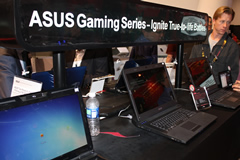
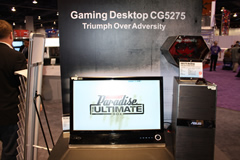
That's not to say Asus neglected the side of components. A number of Republic of Gamers motherboards were shown like the Maximus III Extreme that was running four Radeon HD 5850 graphics cards in quad Crossfire.
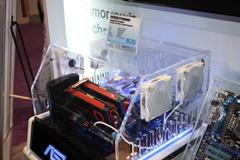
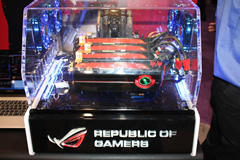
The P7P55D-E Premium, claimed to be the first ever USB 3.0 + SATA 6 GB/s motherboard, running the P55 chipset and a Core i7 870 processor was also host to a couple of Radeon graphics cards and a Blu-ray drive, manufactured and sold by Asus. To show its USB 3.0 capabilities this box was connected to a Buffalo HD-H1.0TU3 external hard drive.
